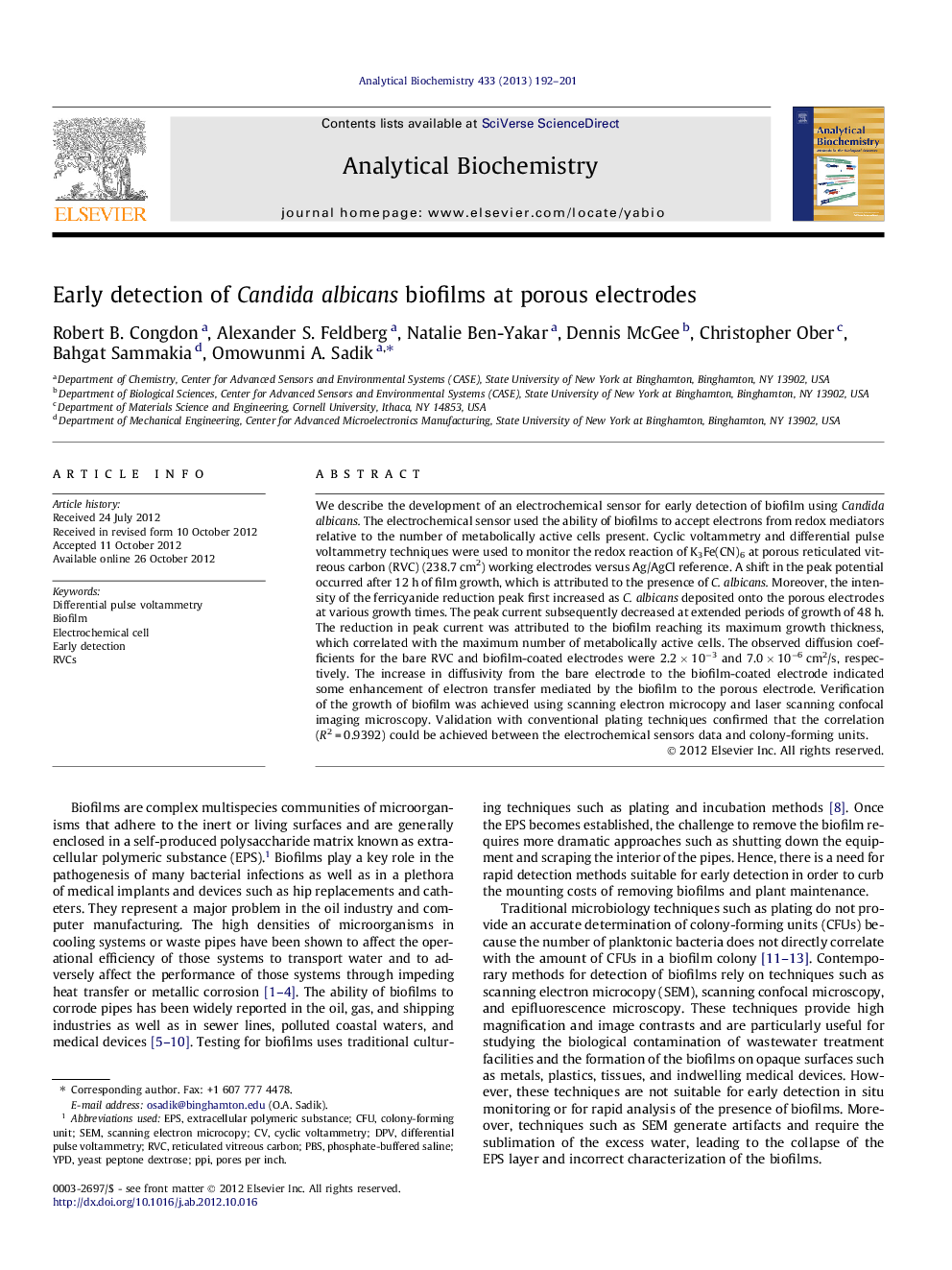| Article ID | Journal | Published Year | Pages | File Type |
|---|---|---|---|---|
| 10532725 | Analytical Biochemistry | 2013 | 10 Pages |
Abstract
We describe the development of an electrochemical sensor for early detection of biofilm using Candida albicans. The electrochemical sensor used the ability of biofilms to accept electrons from redox mediators relative to the number of metabolically active cells present. Cyclic voltammetry and differential pulse voltammetry techniques were used to monitor the redox reaction of K3Fe(CN)6 at porous reticulated vitreous carbon (RVC) (238.7Â cm2) working electrodes versus Ag/AgCl reference. A shift in the peak potential occurred after 12Â h of film growth, which is attributed to the presence of C. albicans. Moreover, the intensity of the ferricyanide reduction peak first increased as C. albicans deposited onto the porous electrodes at various growth times. The peak current subsequently decreased at extended periods of growth of 48Â h. The reduction in peak current was attributed to the biofilm reaching its maximum growth thickness, which correlated with the maximum number of metabolically active cells. The observed diffusion coefficients for the bare RVC and biofilm-coated electrodes were 2.2Â ÃÂ 10â3 and 7.0Â ÃÂ 10â6Â cm2/s, respectively. The increase in diffusivity from the bare electrode to the biofilm-coated electrode indicated some enhancement of electron transfer mediated by the biofilm to the porous electrode. Verification of the growth of biofilm was achieved using scanning electron microcopy and laser scanning confocal imaging microscopy. Validation with conventional plating techniques confirmed that the correlation (R2Â =Â 0.9392) could be achieved between the electrochemical sensors data and colony-forming units.
Related Topics
Physical Sciences and Engineering
Chemistry
Analytical Chemistry
Authors
Robert B. Congdon, Alexander S. Feldberg, Natalie Ben-Yakar, Dennis McGee, Christopher Ober, Bahgat Sammakia, Omowunmi A. Sadik,
